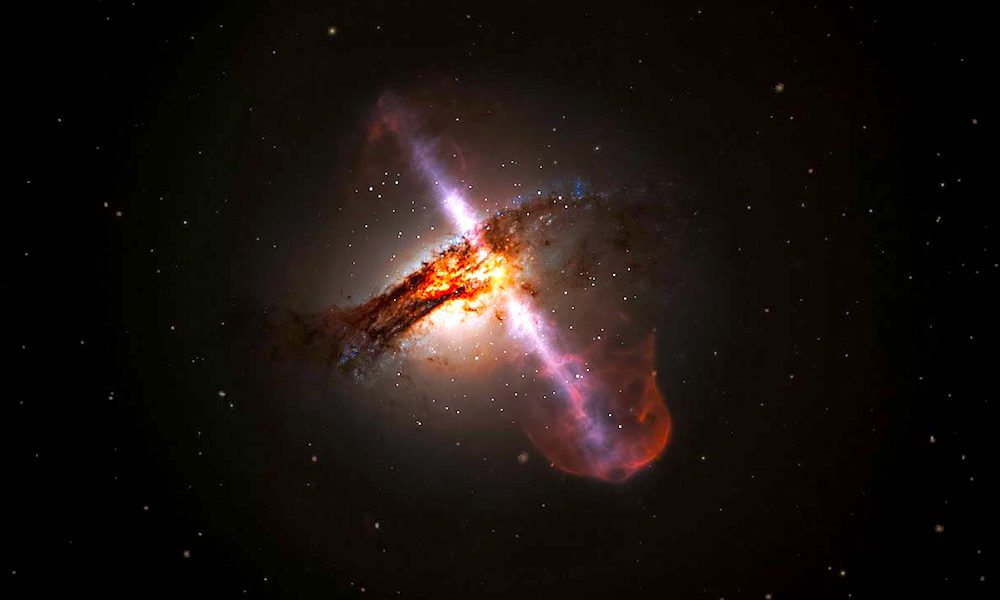Astronomers Have Finally Observed a Supermassive Black Hole Swallowing a Star

Toggle Dark Mode
It’s the result of a truly global collaboration. Europe’s Very Long Baseline Interferometry (VLBI) network, a collection of 21 radio telescopes from different countries that have been corralled into one giant Earth-sized telescope, has been used to observe a supermassive black hole swallowing a star 3.9 billion light years away.
The international team of scientists, led by Jun Yang of the Chalmers University of Technology in Sweden, are saying that these are “some of the sharpest measurements ever made by radio telescopes,” according to CNN.
The VLBI network relies on the observations of each of its constituent telescopes, which are of varying sizes and fields-of-view, in order to make extremely precise measurements across vast reaches of space. Thanks to this partnership, astronomers have obtained sharp observations of the event, which remains among the least understood phenomena in the universe.
Located in the distant Draco galaxy, the black hole’s immense and inescapable gravitational force sucked in a nearby star, devouring it whole. Scientists were able to observe the black hole as it stripped gases from the star, forming a disc around the black hole as it converted gravitational energy into electromagnetic radiation. The spectacular event emitted a bright light that was visible on different wavelengths.
In the aftermath, the black hole belched out narrow “relativistic jets” of particles at close to the speed of light. The stream of particles was the size “of a 2 euro coin on the Moon as seen from Earth,” Yang said in a statement to CNN.
Astronomers are looking forward to the inclusion of China’s 500-meter Aperture Spherical Telescope (FAST), the largest of its kind, in the VLBI network. Due to be operational later this year, FAST will allow scientists to take even more precise measurements of interstellar events.
Featured Image: Science Mag






